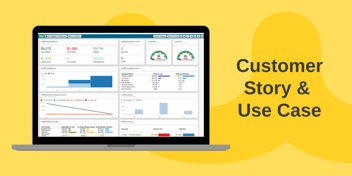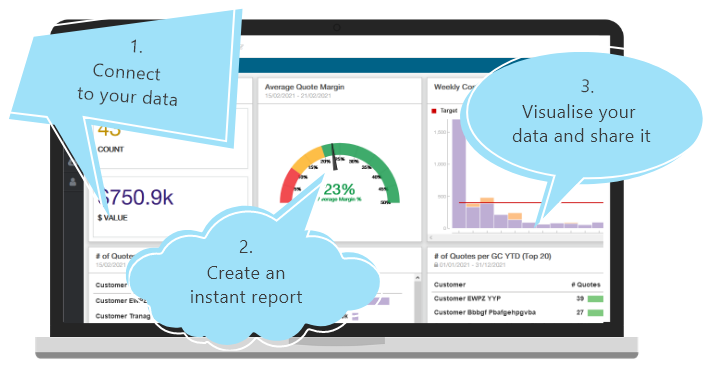The problem with using ServiceTitan templates
Isn’t the whole point of using templates to organize your workflow and make life easier for you and your customers?
We’ve heard from enough ServiceTitan users that it doesn’t exactly work out that way, that it’s super frustrating…
This article names and shames the problem with using ServiceTitan templates, and we offer up a way for you to streamline and optimize the pricing process.
The templates you use to run your business
By its very nature, the process of costing and pricing is dynamic. The market changes constantly, which requires you to be agile in your response to changes. The data for your pricing, proposal and invoicing templates isn’t etched in stone either. And therein lies the root of the problem.
How a pricing template should benefit you
Let’s go through this list and check how well your ServiceTitan templates fulfill their purpose:
- Do you get a structured, transparent framework of consistent pricing that informs (not confuse) customers?
- Are you able to reduce time wasted on manual calculations and ad hoc pricing, and score a predefined structure for efficient, faster decision-making?
- Can you factor in all cost variations related to production, including raw materials, labor and overhead expenses to create comprehensive, competitive pricing?
- Can you account for expenses incurred by logistics and delivery costs, which impact the overall pricing strategy?
- Are you able to effectively communicate pricing to customers to reinforce a value for money perception?
Using your ServiceTitan templates
Your ServiceTitan templates are based on Google Sheets - this fact alone means you’re able to calculate pricing correctly for invoicing, quotes, estimates, etc. But everything starts with the pricebook. The ServiceTitan Pricebook Excel spreadsheet is where you do your pricing edits, adding and adjusting information as required. If you’re setting yours up now, you might appreciate this overview of the process.
As it's the foundation of all other templates you use inside ServiceTitan, entering data correctly (and keeping it so) is crucial. It can be fiddly in places. For example, just try to remove a column from the exported XLSX file (if, let's say, you feel this info isn't required in your Pricebook). You’ll find that the system will completely ignore the action because it’s designed to do that. When you import the data into ServiceTitan, it won’t change your Pricebook. For that matter, doing anything the system doesn’t like (and there’s quite a list of no-no’s) will cause it to spew import errors. Sure there are steps to avoid painful mistakes, but the process can feel pretty limiting.
Get past the import errors and then you have to contend with discrepancies arising from changes in supplier pricing versus what's uploaded in your ServiceTitan account. Errors that occur here will permeate throughout the system and throw a spanner in your workflow. As many of your own product items and supplier items as you can add to a pricing template, as many work order, estimate, and invoice lines are impacted.
Using those ServiceTitan templates to manage and implement your pricing will cost you a lot more effort to be effective.
The problem with ServiceTitan templates
Your main drag comes from the fact that you’re having to maintain data manually. Despite even the most meticulous attention to detail, your business faces real risks from the practical limitations of ServiceTitan templates.
The bottom-line risks
Losing money on jobs - it happens when pricing on estimates don’t correspond with increases in material costs. Maybe it’s due to supply chain issues, fluctuations in commodity prices, or increases in supplier pricing. It can be any market influences out of your control that affect the way you should be costing jobs.
Your technicians could end up underquoting on jobs. By the time pricing data is updated in your ServiceTitan Pricebook and wherever the corresponding items were included on templates, the sale might already be won and closed on the old price. That’s bad for morale and your bottom line.
Losing revenue opportunities - it happens while your staff is spending their time manually editing templates instead of investing in revenue-generating activities. You’ve got bulk editing options, especially with ServiceTitan’s PricebookPro package, but otherwise it's a mind-numbing process to follow every time something changes. Someone must monitor supplier catalogs to check for any changes to the pricing info of items you sell, including images, descriptions and prices. It takes time to identify updated items. It takes more time to make changes to your own pricing info.
Then, you must painstakingly update any templates where you’ve included those items. As if that isn’t enough misdirection of your resources, someone must also be tasked with notifying technicians of pricing updates to prevent them from mistakenly using outdated info.
The practical limitations
Your templates perform an integral function in your workflow, but they miss real-time magic. Sure, you get pricing update notifications but they just sit there like unread emails in your inbox. You have to open them to know what they are and act upon them. Because those updates aren’t automatic.
Once an item is added to a template in ServiceTitan, just like it is with your Pricebook, the corresponding info becomes static.
What frustrates you most:
- Trying to present technicians with up-to-date pricing when they’re out on service calls? You know things can change at any time, leaving yourself vulnerable to incorrect info, an unprofessional image, potentially a bunch of wasted trips for your techs.
- Hoping you’ve got the correct pricing applied to every estimate across all services when there’s a real chance something's changed? There’s no moving forward without first making comparisons between your ServiceTitan templates and supplier pricing info.
- Failing to transfer consistent pricing info throughout the job life cycle? While a job transitions from estimate to work order to invoice stages, pricing data changes in ServiceTitan don’t happen in real time. Only after manually checking for errors and discrepancies can you make adjustments.
Imagine going through this process of updating pricing data just to ensure what’s on your templates is accurate. Not a fun prospect knowing how hard you must work for that consistency, to maintain accuracy and make your techs look good.
And then your Pricebook grows…
Scaling your service offerings brings additional challenges. Your ServiceTitan Pricebook grows and before you know it, data gets duplicated. Oh, the horrors of the trickle-down effect!
- Accidental duplication of old quoting templates - it causes you to drown in a sea of outdated pricing, making you underquote on jobs and messing up your profit margins, reporting and planning.
- Misquoted jobs based on incorrect data on static templates - it makes your technicians come across unprepared, your brand untrustworthy. Your customers become confused and unhappy, because they end up paying more than expected - when the mistake is detected after quoting and the tech returns to the client with the correct pricing - or you honor the misquoted price and accept the loss.
- The huge dent in your efficiency - when you spend ages manually verifying every single line on an invoice template. Even if you specially employ someone to root out anomalies from your growing pricing database, it still slows down the quoting process and service delivery. Good luck getting your staff to buy into such an unwieldy, hard-to-use system.
Wish your templates would work better?
Let’s face it: Managing your ServiceTitan Pricebook is heavy on your resources - so too is keeping the information in your templates correct. But there has to be a better way than the repetitious exporting, editing and re-importing of pricing data.
Wink solves this problem with using your ServiceTitan templates. Working from a user-friendly dashboard, you’ll have an easy reference point to check that your pricing data uploaded to ServiceTitan matches that of your suppliers’ actual pricing info right now. The secret to this solution is automation.
Wink partners with ServiceTitan to help users optimize their Pricebook. Our automation pushes your supplier pricing data directly into your ServiceTitan account. Together with your own materials, equipment and service pricing, it keeps all the data fresh. You don’t just get change notifications, updates are also made for you in real time. And with a dynamic pricebook as the foundation, you're assured of 100% accuracy in your ServiceTitan templates.
For a streamlined pricing process that makes life easier for both staff and customers, sign up to Wink Reports now and put the brakes on problematic templates for good.

%20(3).png?width=900&height=450&name=Hubspot%20Blog%20Header%20Banner_1%20(900%20x%20450%20px)%20(3).png)



